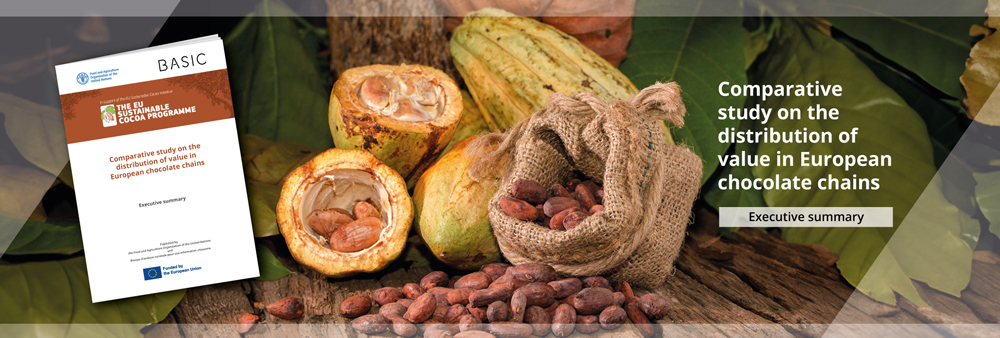Comprehensive market study confirms low margins for cocoa farmers, in renewed hope for increased income

Europe's cocoa and chocolate market, one of the largest in the world, is a stable and flourishing market. Most of the cocoa and chocolate consumed in the EU originates from West Africa, however, in these countries, cocoa farmers have seen their income decline so much in the past decades that many live in poverty. The recent surge in cocoa prices is however changing the rules of the game and give hope that farmers can achieve a living income.
Data compiled by the French research centre Le Basic (Bureau d’analyse sociétale d’intérêt collectif) on value distribution in the French and German markets, were the subject of a side event at the World Cocoa Conference in Brussels on Sunday with panellists from the cocoa and chocolate private sector as well as the Food and Agriculture Organization of the United Nations.
"Our ambition was to facilitate the dialogue between cocoa stakeholders and public authorities by producing fact-based information on value and costs’ distribution," said Christophe Alliot, co-founder of Le Basic. "We wanted to help understand where value is generated along the chain and what are the implications on farmers income."
Based on the original studies of the French and German markets undertaken respectively in 2018 and 2020 and chosen for being major consumers markets, the scenarios of Q1 and Q2, 2024 show a temporary reduction in net margins achieved by chocolate manufacturers due to the general increase in costs (cocoa and main ingredients such as sugar and milk, but also energy, packaging and wages).
Data from 2018 and 2020 showed that the last two actors at the end of the chocolate tablets value chain, ie. the chocolate brands and the retailers, receive the largest share of the value of a chocolate tablet, at a combined 70 percent, while cocoa farmers receive the lowest at about 11 percent.
Most of the value creation along the chain is linked to intangible assets such as marketing and branding which are essentially managed by brands and retailers. This situation is further amplified, as the study shows, by the complexity of the cocoa/chocolate chain which is defined by a high level of industrialisation and large economies of scale at the processing stage.
"Our objective at FAO is to work with partners to support our member countries in implementing measures for a more sustainable cocoa production, that achieve better income for farmers, while preserving the environment," said James Tefft, Senior Economist at the FAO Investment Centre. "Most of world cocoa is produced by small-scale producers who struggle to have a decent income. After a decade of decline, prices to producers have increased substantially this year. This gives a lot of hope for farmers to have a more decent income.”
Some steps were already taken to address the situation, such as the Living Income Differential (LID) introduced jointly by Cote d'Ivoire and Ghana in 2020. The two countries, which together account for nearly two-third of the world's cocoa output, reached an agreement with the industry on a fixed premium on bulk cocoa beans of 400 USD per ton.
"Through the Sustainable Cocoa Initiative, we are working with partners and stakeholders to make the cocoa value chain more sustainable," said Zoé Druilhe at the European Commission's INTPA directorate. "Our goal is to promote higher farmgate prices to address producers’ poverty which is recognized as the root cause of child labour and deforestation."
For more information, please find an executive summary of the Comparative study on the distribution of value in European chocolate chains for the French market on the following link:
English: https://www.fao.org/documents/card/en/c/cd0411en
French: https://www.fao.org/documents/card/fr/c/cd0411fr
A similar report focused on the German market will be published shortly.
